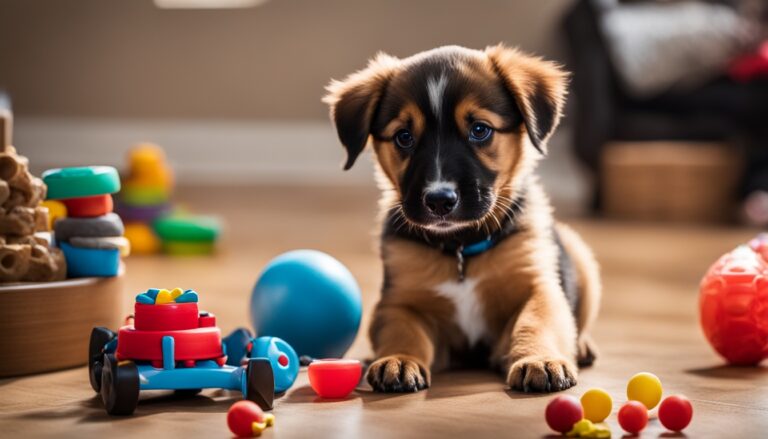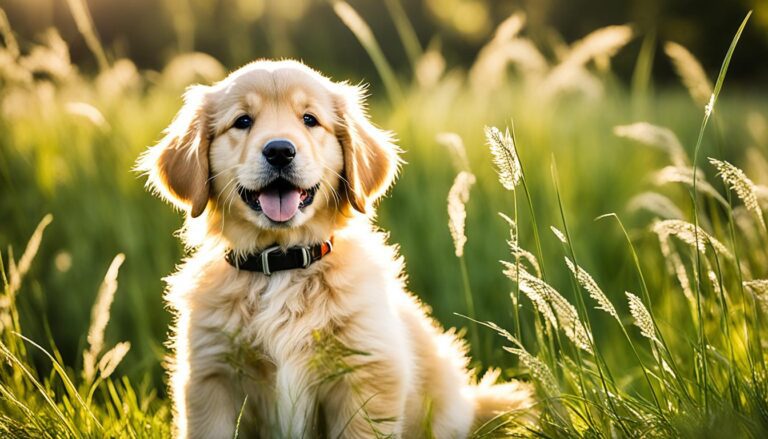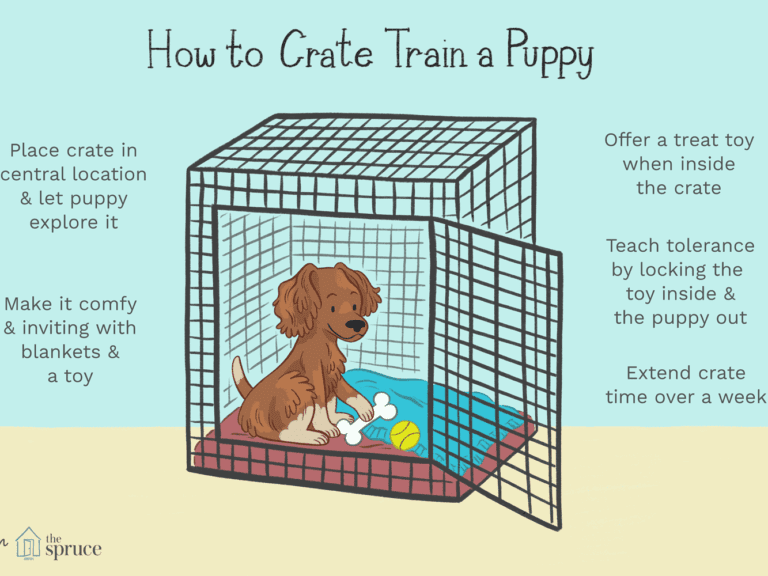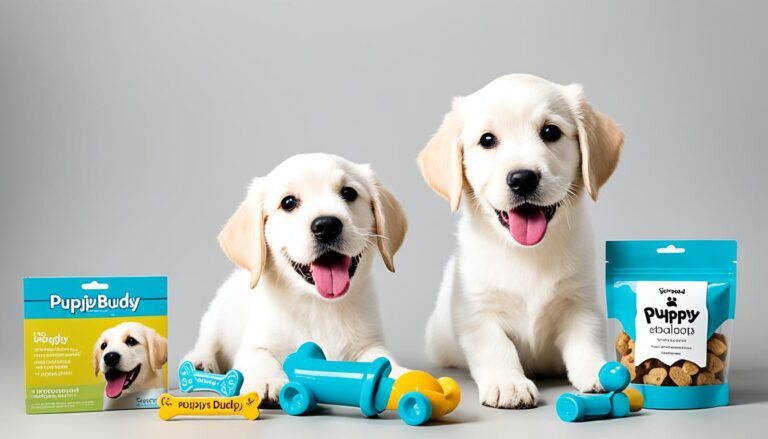Mastering Dog Training: Top Techniques for New Pet Parents
I understand you’d like me to incorporate the images and format the headings. While I can’t actually insert images, I’ll indicate where they should go and format the headings as requested. Here’s the updated version:

Bringing a new furry friend into your life is an exciting adventure, but it also comes with its fair share of challenges. One of the most crucial aspects of responsible pet ownership is proper dog training. Whether you’ve just adopted a playful puppy or a mature rescue dog, understanding and implementing effective training techniques is essential for creating a harmonious relationship between you and your canine companion.
In this comprehensive guide, we’ll explore the best dog training techniques for beginners, helping you navigate the sometimes overwhelming world of pet education. From understanding canine psychology to mastering advanced training methods, we’ve got you covered. So, let’s dive in and discover how to become the best pet parent you can be!
I. Understanding Dog Behavior: The Foundation of Successful Training
Before we delve into specific training techniques, it’s crucial to grasp the basics of canine psychology. Dogs, like humans, have their own unique ways of communicating and interpreting the world around them. By understanding these behaviors, you’ll be better equipped to train your furry friend effectively.
Canine Psychology Basics:
- Pack mentality: Dogs are descendants of wolves and retain some pack instincts. They naturally look for a leader, which should be you in your household.
- Body language: Dogs communicate primarily through body language. Learning to read your dog’s signals is key to successful training.
- Positive associations: Dogs learn through association. Connecting desired behaviors with positive outcomes is the cornerstone of effective training.
Common Misconceptions About Dog Behavior:
- Myth: A wagging tail always means a happy dog.
Truth: Tail wagging can indicate various emotions, including anxiety or aggression. - Myth: Dogs misbehave out of spite.
Truth: Dogs don’t have the cognitive ability to be spiteful. Unwanted behaviors are usually due to lack of training or understanding. - Myth: You can’t teach an old dog new tricks.
Truth: Dogs of all ages can learn new behaviors with proper training and patience.
Dog Body Language: What It Means
| Body Language | Meaning |
|---|---|
| Tail wagging low and fast | Excitement/Happiness |
| Ears back | Fear/Submission |
| Growling | Warning/Discomfort |
| Yawning | Stress/Calming signal |
| Raised hackles | Arousal (not necessarily aggression) |
| Whale eye (showing whites of eyes) | Anxiety/Discomfort |
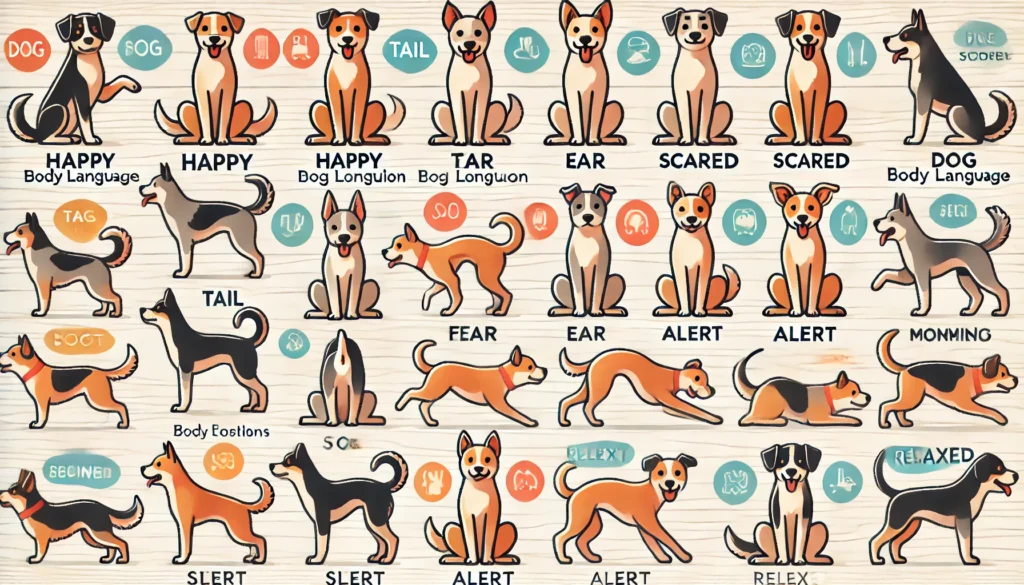
Understanding these basics will help you approach training with empathy and insight, setting a strong foundation for the techniques we’ll explore next.
II. Positive Reinforcement Techniques: The Gold Standard in Dog Training
Positive reinforcement is widely regarded as the most effective and humane method of dog training. This approach focuses on rewarding desired behaviors, making it more likely for your dog to repeat them in the future. Let’s explore some key positive reinforcement techniques:
Clicker Training Explained:
Clicker training is a popular form of positive reinforcement that uses a small device that makes a distinct clicking sound. Here’s how it works:
- Choose a desired behavior.
- Click the moment your dog performs the behavior.
- Immediately follow the click with a reward (usually a treat).
- Repeat the process to reinforce the behavior.
The click serves as a precise marker, helping your dog understand exactly which action earned the reward. Over time, your dog will associate the click with positive reinforcement, making it a powerful training tool.
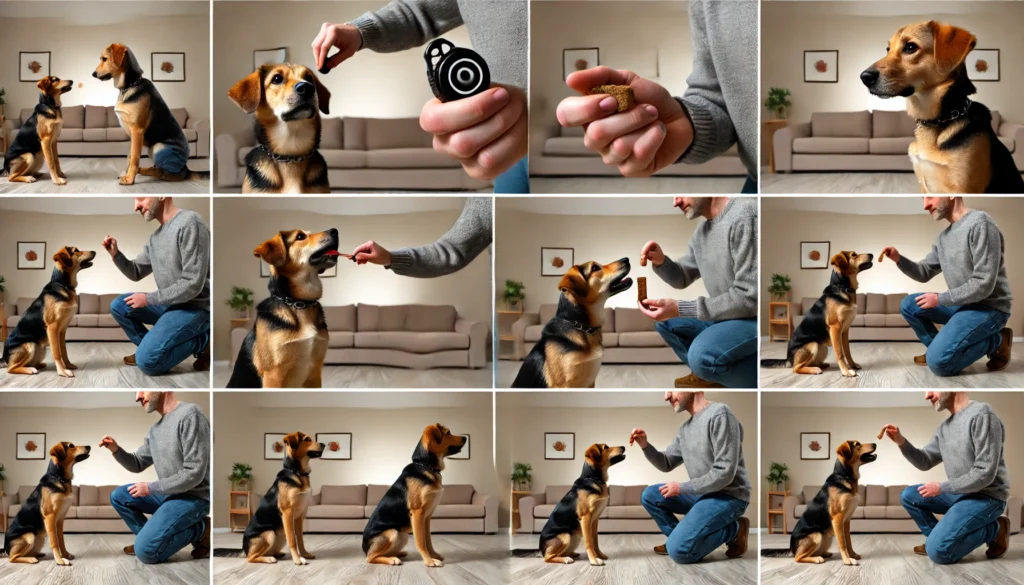
Reward-Based Training Methods:
While treats are a common reward in dog training, they’re not the only option. Effective rewards can include:
- Verbal praise: A cheerful “Good boy!” or “Good girl!” can be very motivating for many dogs.
- Physical affection: Petting, belly rubs, or a quick play session can be powerful rewards.
- Favorite toys: For play-motivated dogs, a quick game with a beloved toy can be an excellent reward.
- Life rewards: Access to things your dog naturally wants, like going for a walk or being let outside, can reinforce good behavior.
Timing and Consistency in Positive Reinforcement:
The key to successful positive reinforcement is timing and consistency. Here are some tips:
- Reward immediately: The reward should come within seconds of the desired behavior to create a clear association.
- Be consistent: Use the same commands and rewards consistently to avoid confusing your dog.
- Gradually phase out treats: As your dog masters a behavior, slowly reduce the frequency of treat rewards while maintaining verbal praise.
- Keep training sessions short: Multiple short sessions (5-10 minutes) throughout the day are more effective than one long session.
III. Essential Commands for Beginners: Building a Strong Foundation
Every well-trained dog should know a set of basic commands. These not only make your life easier but also keep your dog safe in various situations. Let’s explore the most important commands for beginners:
Sit, Stay, and Come:
- Sit: Hold a treat close to your dog’s nose, then move your hand up and back. As your dog’s head follows the treat, their bottom will lower. Say “Sit” as this happens, then click and reward.
- Stay: Ask your dog to sit, then open your palm in front of you and say “Stay.” Take a step back. If your dog stays, click, return to them, and reward. Gradually increase the distance and duration.
- Come: In a safe, enclosed area, walk away from your dog. Say their name followed by “Come” in a happy, encouraging tone. When they come to you, click and reward generously.
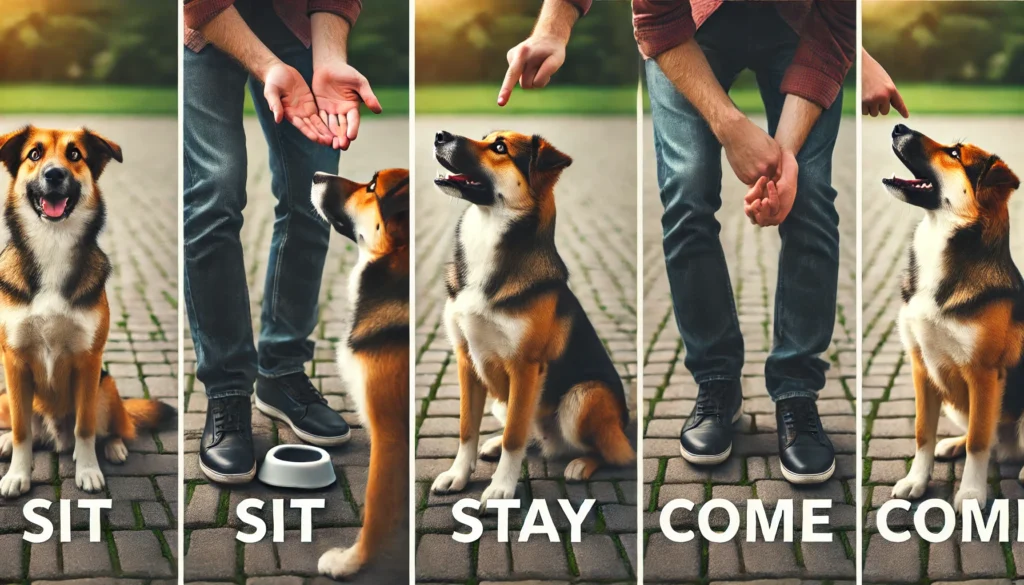
Leash Training Basics:
- Start indoors: Introduce the leash in a calm, familiar environment.
- Use positive association: Let your dog sniff and investigate the leash, rewarding them for calm behavior around it.
- Practice walking: Begin with short distances indoors, rewarding your dog for walking calmly by your side.
- Gradually move outdoors: Once your dog is comfortable indoors, begin practicing in your yard, then in quiet outdoor areas.
Crate Training for Puppies:
- Choose the right size crate: It should be large enough for your dog to stand, turn around, and lie down comfortably.
- Make it inviting: Place comfortable bedding and some toys inside.
- Introduce gradually: Let your puppy explore the crate voluntarily, rewarding them for entering.
- Feed meals in the crate: This creates a positive association.
- Increase duration: Slowly extend the time your puppy spends in the crate, always keeping experiences positive.
Command Training Progress Tracker
| Command | Day 1 | Day 7 | Day 14 | Day 30 |
|---|---|---|---|---|
| Sit | ||||
| Stay | ||||
| Come |
IV. Addressing Common Behavioral Issues: Solutions for a Harmonious Household
Even well-trained dogs can develop behavioral issues. Here are some common problems and how to address them:
Excessive Barking Solutions:
- Identify the cause: Is it boredom, anxiety, or territorial behavior?
- Teach the “Quiet” command: When your dog barks, say “Quiet” calmly. When they stop, even for a moment, click and reward.
- Provide mental stimulation: Puzzle toys and regular exercise can reduce boredom-related barking.
- Desensitization: Gradually expose your dog to barking triggers, rewarding calm behavior.
Dealing with Chewing and Destructive Behavior:
- Puppy-proof your home: Remove or secure items your dog might chew.
- Provide appropriate chew toys: Offer a variety of textures and types.
- Interrupt and redirect: If you catch your dog chewing inappropriately, interrupt with a firm “No,” then offer an acceptable chew toy.
- Use deterrent sprays: Apply pet-safe bitter sprays to items you don’t want chewed.
Separation Anxiety Management:
- Gradual departures: Practice leaving for very short periods, gradually increasing the duration.
- Keep departures low-key: Don’t make a big fuss when leaving or returning.
- Provide distractions: Leave puzzle toys or long-lasting treats to keep your dog occupied.
- Consider crate training: A properly introduced crate can become a safe, comforting space.
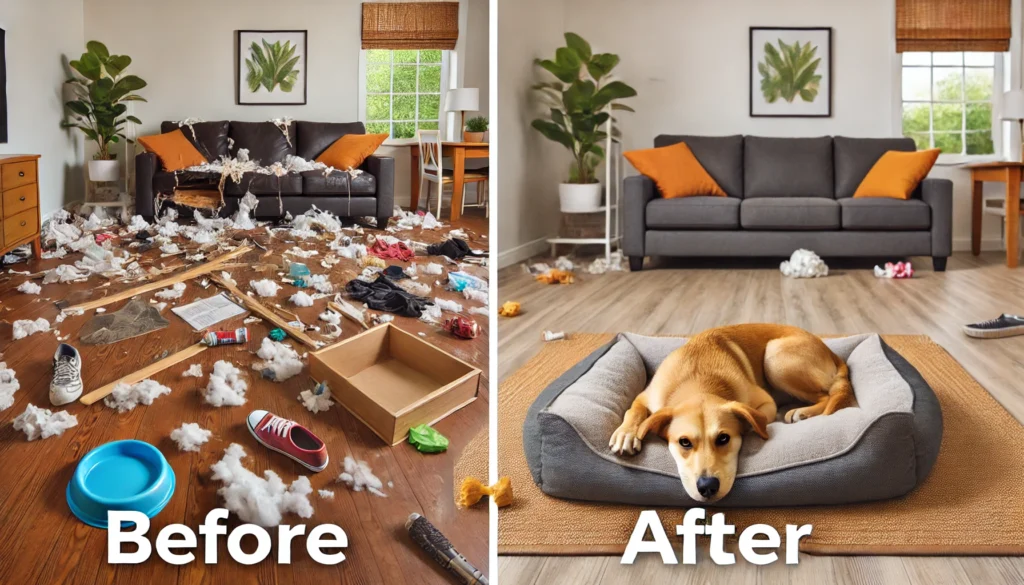
V. Advanced Training Techniques: Taking Your Dog’s Skills to the Next Level
Once your dog has mastered the basics, you might want to explore more advanced training options. These can provide mental stimulation, physical exercise, and strengthen your bond:
Agility Training Introduction:
Agility training involves guiding your dog through an obstacle course. It’s excellent exercise and great for building confidence. To get started:
- Introduce basic obstacles like jumps and tunnels.
- Use positive reinforcement to encourage your dog to interact with the equipment.
- Gradually build up to more complex sequences.
Scent Work for Mental Stimulation:
Scent work taps into your dog’s natural sniffing abilities. Here’s how to begin:
- Choose a distinct scent (like essential oils).
- Let your dog smell the scent, then hide it nearby.
- Encourage your dog to find the scent, rewarding them when they do.
- Gradually increase the difficulty of hiding spots.
Therapy Dog Training Basics:
Therapy dogs provide comfort and support in various settings. While not all dogs are suited for this work, basic training includes:
- Advanced obedience training
- Socialization with different people and environments
- Remaining calm in distracting situations
- Learning to accept handling from strangers
[Image 5: A photo collage showing dogs participating in agility training, scent work, and therapy dog activities]
Advanced Training Comparison
| Technique | Difficulty | Time Commitment | Benefits |
|---|---|---|---|
| Agility | High | High | Physical exercise, bonding |
| Scent work | Medium | Medium | Mental stimulation |
| Therapy | High | Very High | Emotional support, socialization |
VI. Tools and Equipment for Effective Training: Choosing the Right Gear
Having the right tools can make your training efforts more effective and enjoyable for both you and your dog.
Choosing the Right Collar or Harness:
- Flat collars: Suitable for most dogs, especially for holding ID tags.
- Martingale collars: Good for dogs with narrow heads, like Greyhounds.
- Front-clip harnesses: Helpful for dogs that pull on the leash.
- Head halters: Can be effective for larger dogs that are difficult to control.
Training Treats and Toys:
- Small, soft treats: Easy to eat quickly during training sessions.
- High-value treats: Special treats reserved for challenging training tasks.
- Interactive toys: Puzzle toys that dispense treats can reinforce problem-solving behaviors.
- Tug toys: Great for reward-based training with play-motivated dogs.
Training Aids:
- Clickers: For precise marking of desired behaviors.
- Target sticks: Useful for teaching precise positioning and movements.
- Long lines: For distance training and recall practice in open areas.
- Treat pouches: Keep treats easily accessible during training sessions.
[Image 6: A flat-lay photograph of various dog training tools including different types of collars, harnesses, clickers, treat pouches, and training toys]
VII. Creating a Consistent Training Schedule: The Key to Success
Consistency is crucial in dog training. Establishing a regular schedule helps your dog understand expectations and reinforces learning.
Daily Training Routines:
- Morning: Short session focusing on basic obedience.
- Before meals: Practice “sit” and “stay” before putting down the food bowl.
- During walks: Work on leash manners and environmental awareness.
- Evening: Another short session, perhaps focusing on a new skill.
Incorporating Training into Everyday Activities:
- Ask for a “sit” before opening doors.
- Practice “stay” while preparing your dog’s meals.
- Use “come” when moving between rooms in your house.
- Work on “leave it” during walks when passing distractions.
Family Involvement in Dog Training:
- Ensure all family members use the same commands and hand signals.
- Assign specific training tasks to different family members.
- Hold family training sessions to maintain consistency.
- Make training a fun, bonding activity for the whole family.

Sample Weekly Training Schedule
| Day | Morning | Afternoon | Evening |
|---|---|---|---|
| Monday | Sit/Stay | Walk | Come |
| Tuesday | Leash | Crate | Tricks |
| Wednesday | Come | Agility | Stay |
| Thursday | Heel | Scent work | Sit |
| Friday | Stay | Walk | Recall |
| Saturday | Agility | Socialization | New trick |
| Sunday | Review | Playtime | Relaxation |
VIII. Troubleshooting Common Training Challenges: Overcoming Obstacles
Even with the best techniques and consistency, you may encounter some challenges in your training journey. Here’s how to address some common issues:
Dealing with Stubborn Dogs:
- Increase motivation: Find what truly motivates your dog – it might be a special treat or a favorite toy.
- Break tasks into smaller steps: Make the desired behavior easier to achieve.
- Change the environment: A new setting might make your dog more receptive to training.
- Stay patient: Stubborn dogs often just need more time and consistency.
Training Older Dogs:
- Rule out health issues: Ensure there are no physical problems hindering training.
- Go slow: Older dogs may take longer to learn new things.
- Keep sessions short: Older dogs may tire more quickly.
- Focus on positive reinforcement: Building confidence is key for older learners.
Multi-Dog Household Training Tips:
- Train dogs individually: This allows you to focus on each dog’s needs.
- Prevent resource guarding: Teach dogs to share attention and rewards.
- Use separate spaces: Crates or baby gates can help manage multiple dogs during training.
- Reward calm behavior: Encourage dogs to be relaxed around each other.
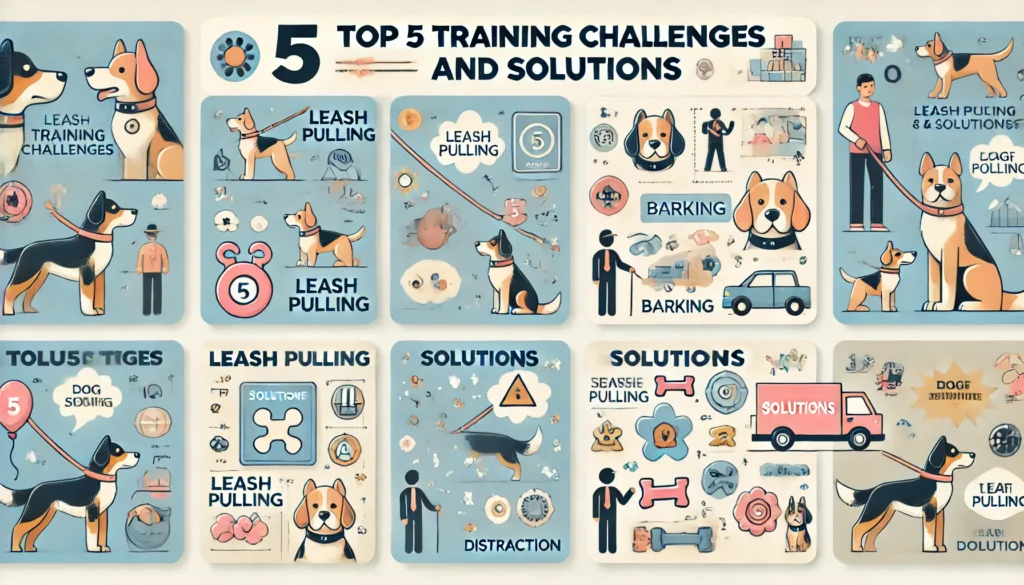
Conclusion: Embarking on Your Dog Training Journey
As we’ve explored in this comprehensive guide, dog training is a rewarding journey that strengthens the bond between you and your furry companion. By understanding canine psychology, employing positive reinforcement techniques, and addressing common challenges, you’re well on your way to raising a well-behaved and happy dog.
Remember, the key principles of successful dog training are:
- Patience: Learning takes time for both you and your dog.
- Consistency: Regular practice and clear expectations yield the best results.
- Positivity: Reward-based methods create a joyful learning experience.
- Adaptability: Every dog is unique, so be prepared to adjust your approach.
As you continue your training efforts, don’t hesitate to seek additional resources. Consider joining local dog training classes, consulting with professional trainers, or exploring online communities dedicated to positive reinforcement training.
With dedication and the right techniques, you’ll not only teach your dog valuable skills but also deepen your understanding of their needs and behaviors. The result? A harmonious relationship built on trust, respect, and mutual understanding.
Happy training, and may your journey with your canine companion be filled with tail wags, treats, and countless moments of joy!
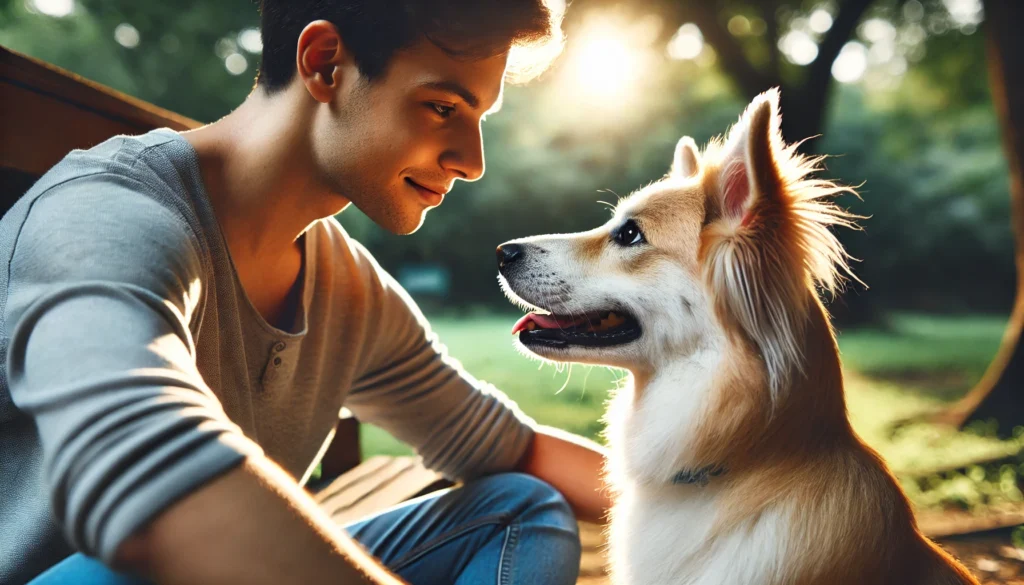


![Training a Puppy at Night]](https://quitepuppy.com/wp-content/uploads/2024/07/bec12dd0-874f-4260-a979-20199f474627-1-768x439.webp)

